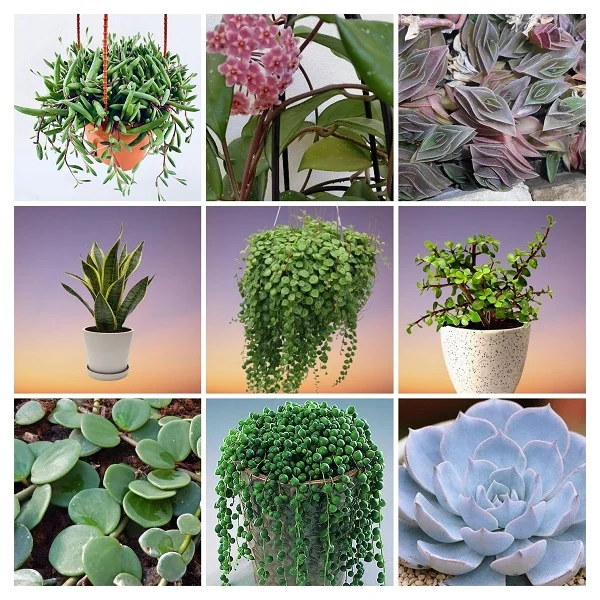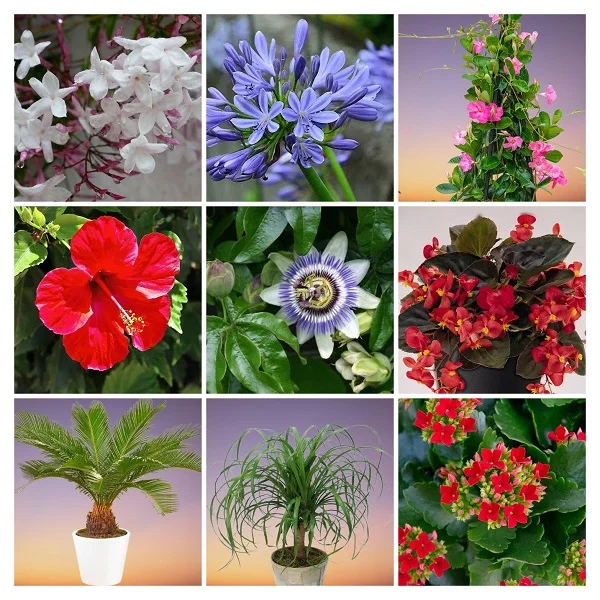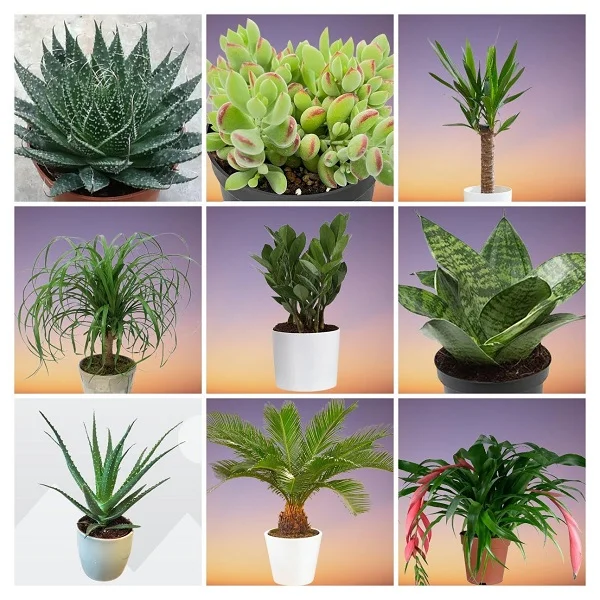Senecio cephalophorus 'Mountain Fire' Indoor Care and Common Problems with Remedies
Some links in this post may be affiliate links
Mountain Fire Senecio (Senecio cephalophorus) grows best in bright light with some direct sunshine, moderate warmth, average humidity and moderately moist, rich, free-draining, succulents soils coupled with monthly feeding in the growing season.
Senecio Mountain Fire is a stunning, drought-tolerant succulent. This guide will cover how to care for Senecio cephalophorus indoors, best propagation methods, and troubleshooting common problems to ensure a thriving plant.
Senecio cephalophorus is among the compact Senecio varieties with a rosette of paddle-shaped, grey-green, succulent leaves on branching stems and a large head of dark-orange inflorescence borne above the foliage on a long stalk.
The species name, 'cephalophorus', is Latin for 'head-bearing', in reference to the large head inflorescence. Mountain Fire Senecio is one of the best flowering plants for indoor growing.
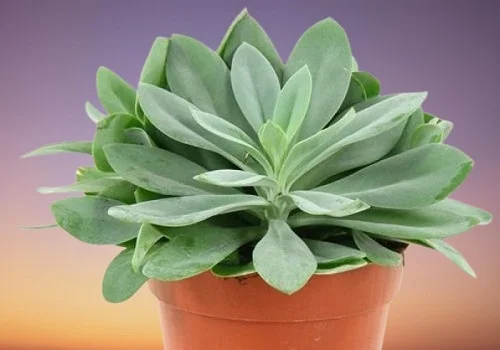
Botanical name: Senecio cephalophorus
Synonmy: Keinia cephalophora
Family: Asteraceae
Common names: Mountain Fire Senecio, Senecio Mountain Fire
Origin
Senecio cephalophorus also called Kleinia cephalophora is a perennial, succulent plant native to South Africa.
Size
Mountain Fire Senecio grows to a height of 1.5-2 feet by 1 feet wide in about 4-6 years. The plant quickly forms offsets which can be used to grow new plants.
Toxicity
Mountain Fire Senecio like other Senecio species is toxic to humans and pets as outlined by The American Society for the Prevention of Cruelty to Animals. Senecio plants contain Pyrrolizidine alkaloids which if is ingested, can cause drooling, vomiting, diarrhea and lethargy.
Contact with the sap may cause skin irritation or skin rash in sensitive skin therefore, always wear gloves when handling the plant. Keep the Mountain Fire Senecio away from the reach of children and pets to avoid mishaps.
How to care for Senecio cephalophorus indoors
Care for Senecio cephalophorus involves giving it bright light with 4-6 hours of direct sunshine, moderate warmth of 20-260C, average humidity of 50-55% and moderately moist, fertile, free-draining, succulents mix coupled with monthly feeding during the growing season.
Mountain Fire Senecio care requires pruning to keep the plant neat and to minimize pest and disease infestations. Repotting is only needed when the plant has become pot-bound. Keep reading for more on these growing conditions and how to provide them.
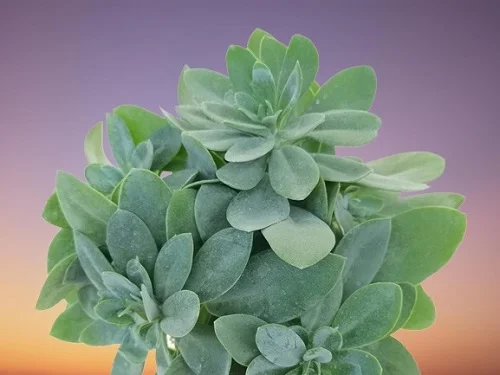
Light Requirements
Mountain Fire Senecio thrives in bright light of morning or late afternoon sunlight of at least 4-6 hours. Keep it away from hot midday sunshine to avoid scorching the leaves.
Too little light leads to stretched, leggy growth. You may use a grow light if the natural lighting is not enough.
Regularly turn the pot to ensure that the plant receives light on all sides for uniform growth and prevent leggy growth.
Watering
Water your Mountain Fire Senecio moderately during the growing season and allow the top 2-3 inches of soil to dry out between waterings. Avoid overwatering to prevent yellow leaves and rotting.
Lessen watering in the cold period (fall and winter) to maintain the soil barely moist. Do not allow the soil to dry out completely as it can lead to wrinkled, shriveled leaves.
Ensure that the pot has a drainage hole to prevent the soil from getting soggy as it can lead in root-rot and death of the plant.
Take care not to wet the foliage during watering to minimize fungal diseases.
Temperature and Humidity
Senecio Mountain Fire flourishes in average warmth of 20-260C. Keep it away from drafts as they can cause in temperature flactuations which may result in slow growth and leaf drop.
Mountain Fire Senecio has no need for high humidity. Average room humidity of 50-55% is ideal for this plant. Ensure that there is good air circulation to reduce fungal disease infestations.
Feeding
Feed your Mountain Fire Senecio during the growing season with a balanced, liquid fertilizer as per the manufacturer's instructions. This plant is not a heavy feeder so be careful when feeding. Over-fertilization can cause excessive, weak growth, making the plant leggy.
Do not feed in the cold season as growth is minimal at this time and feeding at this time can cause fertilizer burn and eventual death of the plant.
Potting Mix
The best potting mix for Mountain Fire Senecio should be a well-draining, sandy soil to avoid getting soggy soil. A mix of 50% cactus or succulent mix, 30% perlite or pumice (for aeration), and 20% sand (for drainage) is ideal as it drains easily.
Repotting
Mountain Fire Senecio has a small root system so frequent repotting is not necessary. Repot it at the beginning of the growing season only when it becomes crowded in its current pot.
Use a pot that is only 1 size larger than the current one. Ascertain that the pot has has a drainage hole to prevent the soil from getting soggy as it can lead to root-rot. Use a shallow pot as the root system is tiny and be careful not to bury the leaves to prevent rotting. Check out these ceramic pots with drainage holes and saucer on Amazon.
Pruning
Pruning Mountain Fire Senecio involves:
- Removal of any dead flowers, leaves and stems to keep the plant neat and also minimize pest and disease infestations.
- Trimming leggy or stretched stems to encourage a bushier growth.
Senecio cephalophorus Propagation
Senecio cephalophorus 'Mountain Fire' is propagated at the beginning of the growing season (spring) from stem cuttings or from offsets which root easily so there is no need for a rooting hormone. Propagating at this time hastens establishment as the plant is actively growing.
Learn how to propagate Senecio cephalophorus 'Mountain Fire' in 3 easy ways.
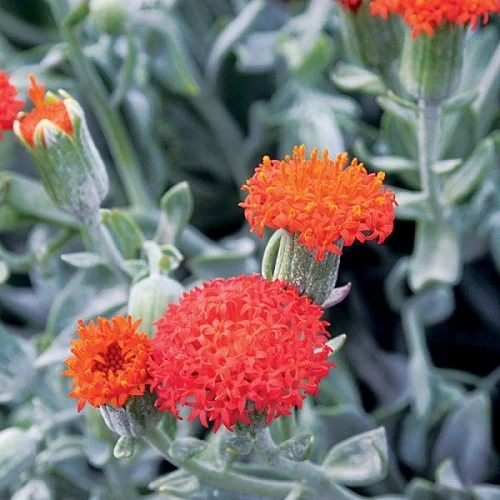
Senecio cephalophorus Problems & Solutions
Mountain Fire Senecio (Senecio cephalophorus) problems include leggy growth, leaf drop, rotting, wilting, leaf spots, pests and diseases among others. Keep reading for more on these problems, their remedies and solutions.
Leggy stems
Leggy stems in Mountain Fire Senecio is due to overwatering, soggy soil, and too little light.
How to fix it
Overwatering: Do not water on a schedule. Water when 2-3 inches of soil dry.
Soggy soil: Decrease watering in the cold season to maintain the soil barely moist. Use a pot with a drainage hole and well-draining soil.
Too little light: Move the plant to a brighter spot or instal grow lights if the natural lighting is not adequate.
Rotate the pot regularly to ensure that the plant receives light on all sides for uniform growth to avoid leggy growth.
Leaf drop
Leaf drop in Mountain Fire is causes by use of very cold water and underwatering.
How to fix it
Cold water: Water the plant with water that is at room temperature.
Underwatering: Water moderately and never allow the soil ball to dry out completely.
Wilted and discolored leaves
Wilted and discolored leaves in Mountain Fire Senecio are caused by overwatering during the cold period. Reduce watering during the cold season and maintain the soil barely moist.
Brown dry spots
Brown dry spots in Mountain Fire Senecio are due to underwatering. Water the plant when the soil dry and do not allow the soil to dry out completely.
Brown, soft leaf spots
Brown, soft leaf spots in Mountain Fire Senecio are an indication of leaf spot disease. Avoid wetting the leaves and improve air circulation to prevent disease infestations.
Rotting base and stem collapse
Rotting plant base and stems collapse in Mountain Fire Senecio is an indication of basal stem-rot disease which is brought about by overwet conditions. Avoid overwatering during the cold season. Use the upper stem to propagate new plants and discard the infected parts.
Pests
The common pests in Mountain Fire Senecio are spider mites, scales and mealybugs. Isolate the affected plant to prevent spread to other plants and treat it with neem oil or insecticidal soap. Ensure to follow the manufacturers instructions.
Conclusion
Senecio cephalophorus 'Mountain Fire' is a low-maintenance, drought-tolerant succulent that thrives with bright light, infrequent watering, and well-draining soil. By following these care, propagation, and troubleshooting tips, you can enjoy a healthy, vibrant plant indoors for many years.
You liked it? Share on social media.
Related Content
Amazon Associates Disclosure
Homeplantsguide.com is a participant in the Amazon Services LLC Associates Program, an affiliate advertising program designed to provide a means for sites to earn advertising fees by advertising and linking to amazon.com.



